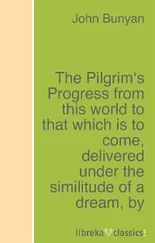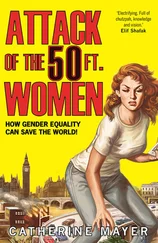Lewis Carroll was an introvert, too, by the way. Without him, there would be no Alice in Wonderland . And by now, this shouldn’t surprise us.
My grandfather was a soft-spoken man with sympathetic blue eyes, and a passion for books and ideas. He always dressed in a suit, and had a courtly way of exclaiming over whatever was exclaimable in people, especially in children. In the Brooklyn neighborhood where he served as a rabbi, the sidewalks were filled with men in black hats, women in skirts that hid their knees, and improbably well-behaved kids. On his way to synagogue, my grandfather would greet the passersby, gently praising this child’s brains, that one’s height, the other’s command of current events. Kids adored him, businessmen respected him, lost souls clung to him.
But what he loved to do best was read. In his small apartment, where as a widower he’d lived alone for decades, all the furniture had yielded its original function to serve as a surface for piles of books: gold-leafed Hebrew texts jumbled together with Margaret Atwood and Milan Kundera. My grandfather would sit beneath a halo-shaped fluorescent light at his tiny kitchen table, sipping Lipton tea and snacking on marble cake, a book propped open on the white cotton tablecloth. In his sermons, each a tapestry of ancient and humanist thought, he’d share with his congregation the fruits of that week’s study. He was a shy person who had trouble making eye contact with the audience, but he was so bold in his spiritual and intellectual explorations that when he spoke the congregation swelled to standing-room-only.
The rest of my family took its cue from him. In our house, reading was the primary group activity. On Saturday afternoons we curled up with our books in the den. It was the best of both worlds: you had the animal warmth of your family right next to you, but you also got to roam around the adventure-land inside your own head.
Yet as a preteen I began to wonder whether all this reading had marked me as “out of it,” a suspicion that seemed confirmed when I went away to summer camp at the age of ten and watched as a girl with thick glasses and a high forehead refused to put down her book on the all-important first day of camp and instantly became a pariah, her days and nights a hell of social exclusion. I longed to read, too, but left my own paperbacks untouched in my suitcase (though I felt guilty about this, as if the books needed me and I was forsaking them). I saw that the girl who kept reading was considered bookish and shy, the very things that I was, too, and knew that I must hide.
After that summer, I felt less comfortable about my desire to be alone with a book. In high school, in college, and as a young lawyer, I tried to make myself appear more extroverted and less eggheady than I truly was.
But as I grew older, I drew inspiration from my grandfather’s example. He was a quiet man, and a great one. When he died at the age of ninety-four, after sixty-two years at the pulpit, the NYPD had to close the streets of his neighborhood to accommodate the throngs of mourners. He would have been surprised to know this. Today, I think that one of the best things about him was his humility.
This book is dedicated, with love, to my childhood family. To my mother, with her endless enthusiasm for quiet kitchen-table chats; she gave us children the gift of intimacy. I was so lucky to have such a devoted mother. To my father, a dedicated physician who taught by example the joys of sitting for hours at a desk, hunting for knowledge, but who also came up for air to introduce me to his favorite poems and science experiments. To my brother and sister, who share to this day the warmth and affection of having grown up in our small family and household full of literature. To my grandmother, for her pluck, grit, and caring.
And in memory of my grandfather, who spoke so eloquently the language of quiet.
A Note on the Words Introvert and Extrovert
This book is about introversion as seen from a cultural point of view. Its primary concern is the age-old dichotomy between the “man of action” and the “man of contemplation,” and how we could improve the world if only there were a greater balance of power between the two types. It focuses on the person who recognizes him- or herself somewhere in the following constellation of attributes: reflective, cerebral, bookish, unassuming, sensitive, thoughtful, serious, contemplative, subtle, introspective, inner-directed, gentle, calm, modest, solitude-seeking, shy, risk-averse, thin-skinned. Quiet is also about this person’s opposite number: the “man of action” who is ebullient, expansive, sociable, gregarious, excitable, dominant, assertive, active, risk-taking, thick-skinned, outer-directed, lighthearted, bold, and comfortable in the spotlight.
These are broad categories, of course. Few individuals identify fully with only one or the other. But most of us recognize these types immediately, because they play meaningful roles in our culture.
Contemporary personality psychologists may have a conception of introversion and extroversion that differs from the one I use in this book. Adherents of the Big Five taxonomy often view such characteristics as the tendency to have a cerebral nature, a rich inner life, a strong conscience, some degree of anxiety (especially shyness), and a risk-averse nature as belonging to categories quite separate from introversion. To them, these traits may fall under “openness to experience,” “conscientiousness,” and “neuroticism.”
My use of the word introvert is deliberately broader, drawing on the insights of Big Five psychology, but also encompassing Jungian thinking on the introvert’s inner world of “inexhaustible charm” and subjective experience; Jerome Kagan’s research on high reactivity and anxiety (see chapters 4 and 5); Elaine Aron’s work on sensory processing sensitivity and its relationship to conscientiousness, intense feeling, inner-directedness, and depth of processing (see chapter 6); and various research on the persistence and concentration that introverts bring to problem-solving, much of it summarized wonderfully in Gerald Matthews’s work (see chapter 7).
Indeed, for over three thousand years, Western culture has linked the qualities in the above constellations of adjectives. As the anthropologist C. A. Valentine once wrote:
Western cultural traditions include a conception of individual variability which appears to be old, widespread, and persistent. In popular form this is the familiar notion of the man of action, practical man, realist, or sociable person as opposed to the thinker, dreamer, idealist, or shy individual. The most widely used labels associated with this tradition are the type designations extrovert and introvert.
Valentine’s concept of introversion includes traits that contemporary psychology would classify as openness to experience (“thinker, dreamer”), conscientiousness (“idealist”), and neuroticism (“shy individual”).
A long line of poets, scientists, and philosophers have also tended to group these traits together. All the way back in Genesis, the earliest book of the Bible, we had cerebral Jacob (a “quiet man dwelling in tents” who later becomes “Israel,” meaning one who wrestles inwardly with God) squaring off in sibling rivalry with his brother, the swashbuckling Esau (a “skillful hunter” and “man of the field”). In classical antiquity, the physicians Hippocrates and Galen famously proposed that our temperaments—and destinies—were a function of our bodily fluids, with extra blood and “yellow bile” making us sanguine or choleric (stable or neurotic extroversion), and an excess of phlegm and “black bile” making us calm or melancholic (stable or neurotic introversion). Aristotle noted that the melancholic temperament was associated with eminence in philosophy, poetry, and the arts (today we might classify this as openness to experience). The seventeenth-century English poet John Milton wrote Il Penseroso (“The Thinker”) and L’Allegro (“The Merry One”), comparing “the happy person” who frolics in the countryside and revels in the city with “the thoughtful person” who walks meditatively through the nighttime woods and studies in a “lonely Towr.” (Again, today the description of Il Penseroso would apply not only to introversion but also to openness to experience and neuroticism.) The nineteenth-century German philosopher Schopenhauer contrasted “good-spirited” people (energetic, active, and easily bored) with his preferred type, “intelligent people” (sensitive, imaginative, and melancholic). “Mark this well, ye proud men of action!” declared his countryman Heinrich Heine. “Ye are, after all, nothing but unconscious instruments of the men of thought.”
Читать дальше
![Сьюзан Кейн Quiet [The Power of Introverts in a World That Can't Stop Talking] обложка книги](/books/33084/syuzan-kejn-quiet-the-power-of-introverts-in-a-wo-cover.webp)











